
Despite recent rule changes, building “ghost guns” is still legal and nothing to be spooked about. With an 80 percent lower, some tools and elbow grease, you too can own an unserialized firearm.
There are a lot of myths and misconceptions around what are commonly called “ghost guns.” Practically speaking, a “ghost gun” is just a homemade firearm that uses conventional firearm parts.
Let’s talk about what they are, the different kinds out there, the current legal status surrounding them and finally some 80 percent lower receivers and frames that are well worth the look.
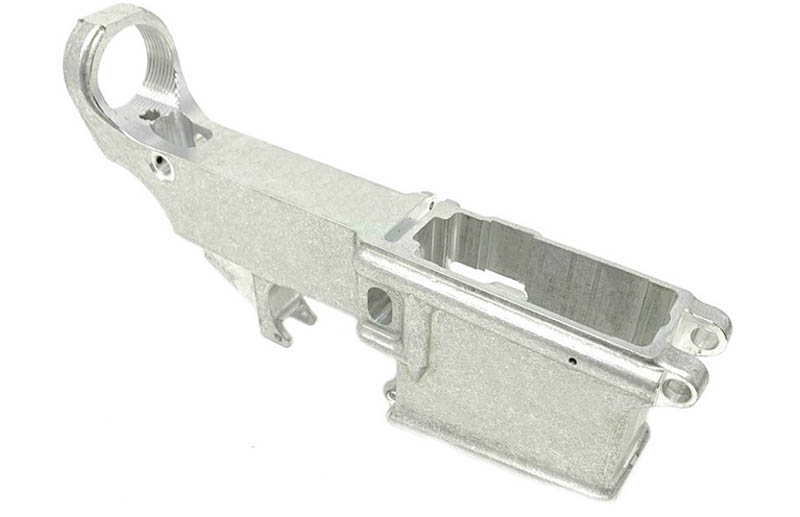
What Is A Ghost Gun? What’s An 80 Percent Receiver?
Ghost gun is a colloquial term that refers to unserialized, homemade firearms that are built using commonly available firearm parts. They differ from “zip guns,” since zip guns are improvised firearms made from…well, anything.
An 80 percent lower receiver is not a legal term, it’s another colloquialism that refers to partially finished receivers that are not yet classified as firearms under the ATF’s definition.
Here is how the ATF (or more properly, BATFE) defines 80 percent lowers:
receiver blanks, castings, or machined bodies in which the fire control area is completely solid and un-machined have not yet reached the stage of manufacture which would result in the classification of a firearm under the GCA of 1968.
The Gun Control Act of 1968 defines a receiver as the part of the gun that “provides housing for the hammer, bolt or breechblock, and firing mechanism.” In other words, a gun isn’t legally a gun until you can install the firing mechanism. There are some wrinkles to this due to recent ATF rule changes we'll get to in a moment.
The GCA also states that homemade firearms (excluding NFA items) are legal for unprohibited persons to make, possess and shoot, so long as they are made for personal use.
80 Percent Kits
The term ”80 Percent lower” implies that only 80 percent of the receiver’s manufacturing has been completed. The actual figure isn’t easily calculated, but the 80 percent name stuck regardless of how accurate it is.
The most common “80 percent kits” are receiver blanks for either Glock clones or AR-15s. To complete each respective build, one must finish the lower receiver or frame then install the firing system and the upper or slide. When sold as “kits,” they typically also include the other necessary hardware, parts or jigs required for the building process.
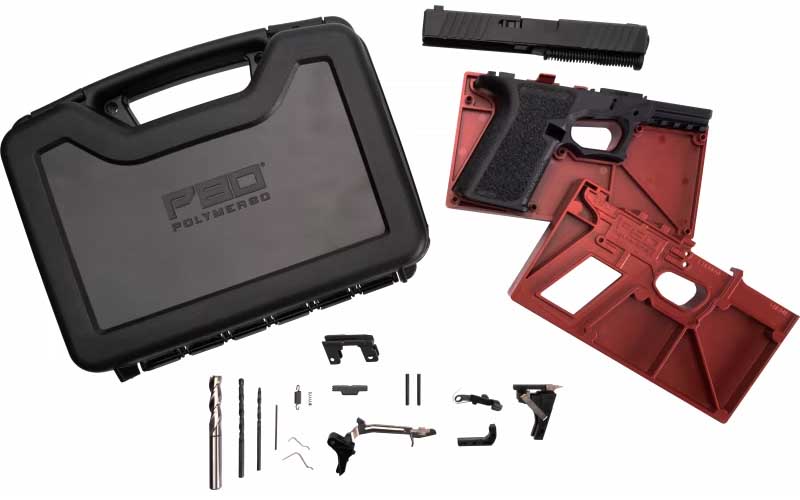
Other firearms designs can have different 80 percent kits and finishing processes, but Glock clones and AR-15s are the most common and some of the simplest to complete.
Why Would You Want An 80 Percent Kit?
Some people want a legally untraceable firearm for ideological reasons. Others want to skip having to fill out a 4473.
Some just enjoy the challenge of building their own gun and gain satisfaction from seeing it work. A lot of people get hooked on building AR-15s after they put their first one together, so an 80 percent kit would be the logical next step to challenge one’s builder skills.
After all, the vast majority of gun owners are normal, law-abiding people. They aren’t trying to make a weapon to commit crimes with. Most people who dabble in building their own guns choose to do so simply because they find it interesting.
It’s also a lot cheaper hobby than building cars.
Are 80 Percent Kits Legal?
Some state regulations have been enacted requiring a receiver or certain “firearm precursor parts” to have a serial number. Such laws exist in California, Colorado, Connecticut, Hawaii, Illinois, Maryland, New Jersey, New York and Washington state.
The Biden administration has also enacted a rule—meaning a decision on how to enforce the laws on the books—stating that “buy, build, shoot kits” are considered firearms since they can be used to assemble a working gun.
The new rule, Final Rule 2021R-05F, was signed into policy by Attorney General Merrick Garland, to take effect on August 24th, 2022. It amends the definitions of the Gun Control Act of 1968, expanding the definitions of a receiver, among other things.
The definitions in Chapter 27, Subsection 478.12 of the Gun Control Act add the distinction that a frame or receiver includes a “partially complete, disassembled, or nonfunctional frame or receiver, including a frame or receiver parts kit, that is designed to or may readily be completed, assembled, restored, or otherwise converted to function as a frame or receiver.”
However, the rule clarifies that “…the terms shall not include a forging, casting, printing, extrusion, unmachined body, or similar article that has not yet reached a stage of manufacture where it is clearly identifiable as an unfinished component of a weapon.”
In other words, if it’s in striking distance of being completed, it will now be considered a receiver and must be serialized and requires a background check to purchase.
As for kits, “…the Director may consider any associated templates, jigs, molds, equipment, tools, instructions, guides, or marketing materials that are sold, distributed, or possessed with the item or kit, or otherwise made available by the seller or distributor of the item or kit to the purchaser or recipient of the item or kit.”
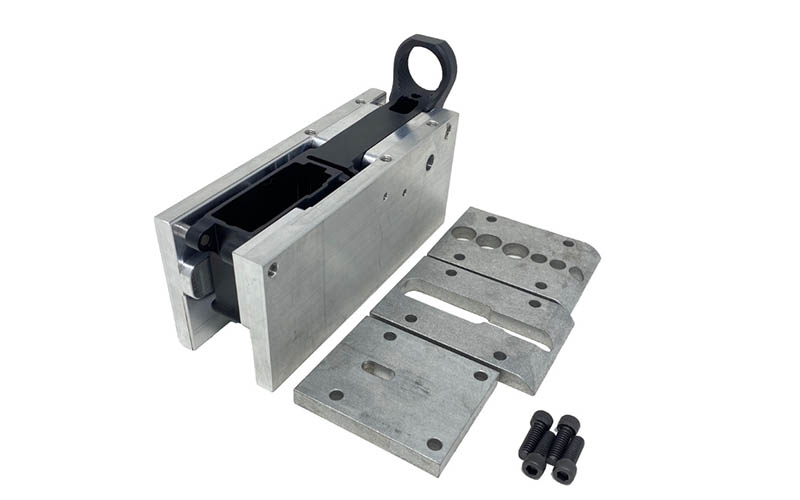
The ATF further clarifies that a “partially complete billet or blank of a frame or receiver with one or more template holes drilled or indexed in the correct location is a frame or receiver.” (Emphasis added.)
So what does this mean?
An unfinished receiver that has had enough meaningful finishing work performed on it to be easily completed will now be considered a receiver. There’s a point at which it isn’t a blank anymore, and while the rule defines the presence of holes being the indicator, it doesn’t spell out much beyond that.
Kits that include jigs, tooling, instructions and an unfinished lower may be designated receivers and/or firearms if they can be readily made into a firearm. Shipping the kits in multiple packages does not circumvent the regulation.
In other words, kits become the “buy, build, shoot kits” when they are easy enough to complete, but precisely how “easy” has not yet been fully defined.
What it ultimately means is that 80 percent lowers, receivers and frames are currently in limbo until the ATF starts to clarify how to remain compliant with 2021R-05F. Manufacturers and retailers are likely to designate them “out of stock” in the meantime, but some may decide to keep selling them until instructed otherwise by the ATF.
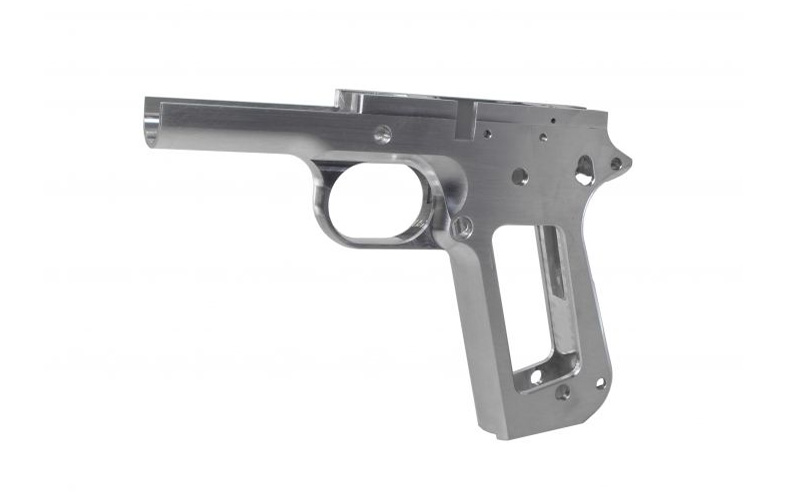
Right now, the ball is in the ATF’s court to give the industry more clarification. Even when that day comes, it may all be for nothing, as the recent Supreme Court ruling on WEST VIRGINIA ET AL. v. ENVIRONMENTAL PROTECTION AGENCY ET AL. may have sweeping ramifications for the ATF’s “rule-making” abilities.
In short, this recent rule change does not ban 80 percent lowers or restrict one’s ability to build unserialized firearms at home. What it does do is add more confusion to an already complicated situation. Until the dust settles, manufacturers and sellers of so-called ghost gun style receivers and kits will have to tread more carefully to ensure they remain in compliance. The most likely result will be the prohibition of kits that include things like jigs and a reduction in how much an 80 percent lower can be finished while still being sold without a serial number. Available options will certainly be more limited as the industry attempts to sort this all out.
Different Kinds Of 80 Percent Lowers, Receivers And Frames
When it comes to 80 percent pistol frames, the most popular by far are polymer build kits that accept Glock components and uppers. Some kits for 1911 pistols exist as well.
As for rifles, 80 percent lowers for the AR-15 and AR-10 family (including DPMS and Armalite pattern) are the most common. AK receiver blanks and a small number of Galil, FAL, G3 and other rifle receiver blanks are all out there too.
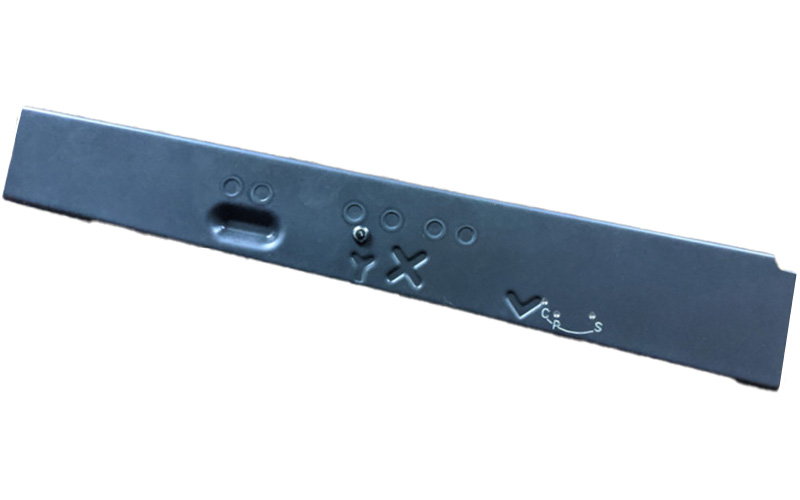
While polymer frames are fine for Glock clones, polymer 80 percent lowers for the AR-15 should be avoided, as the only polymer AR receiver worth considering is the KE ARMS KP-15 which doesn’t have an 80 percent option. While harder to work with than polymer, aluminum AR receivers are still the way to go. Receiver blanks for older rifle designs like AKs are almost always stamped steel, but some milled steel options exist too. Keep in mind that different materials will require different tools to finish, so take that into account before starting a build.
Regardless of the type of gun you plan on building, when it comes to unfinished receivers and frames, make sure to buy one that’s made from the appropriate material and is from a reputable manufacturer.
80 Percent Lower, Frame And Receiver Buyer’s Guide
Note: As discussed above, the current legal situation regarding 80 percent lowers is very tumultuous. Some of the entries here may not be available at the time of publication, but the buyer’s guide will be amended as the new rule becomes more clear and the market more stable. Until then, here are three worth looking at.
Right To Bear AR-15 80 Percent Lower
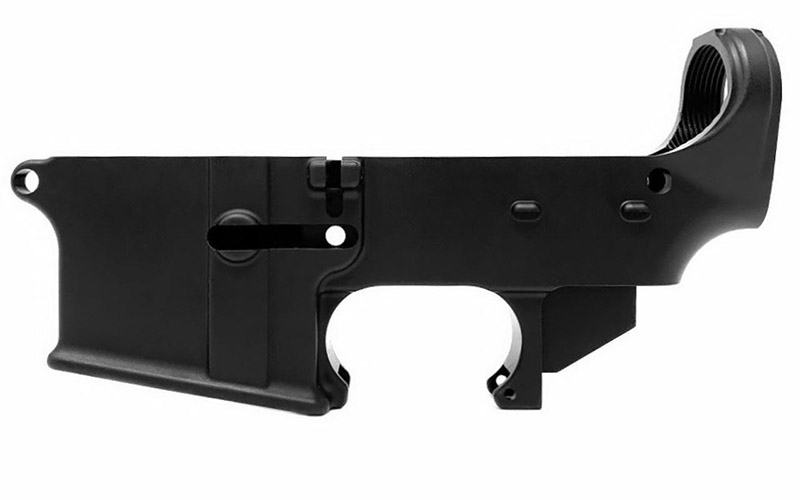
Right To Bear AR-15 80 percent lowers are mil-spec style, with a fenced magazine release and standard magwell. Their receiver blanks are forged (and heat-treated) 7075 aluminum.
To complete the lower, one must machine the trigger and safety wells. Jigs and tools are sold separately but are offered by Right To Bear as well.
You can get yours in the raw, anodized black or even Cerakoted. Right To Bear will also engrave and serialize your receiver blank for a fee.
MSRP: Starts at $59.99 // righttobear.com
Polymer80 PF940C

Polymer80 made the term “80 percent kit” popular. In fact, most Glock clones with non-OEM frames get theirs from Polymer80. Holster support—which is important—is decent for Polymer80 frames too.
PF940C kits are for a Glock 19/23 Gen 3 clone, with some other sizes available as well.
The grip has a straighter, more neutral rake for a more 1911-like feel, and a Picatinny rail. The kit comes with the unfinished frame in black, FDE or gray, and a jig to make all the necessary cuts and drill all the necessary holes.
MSRP: $159 // polymer80.com
Lone Wolf Distributors Freedom Wolf 80 Percent Kit
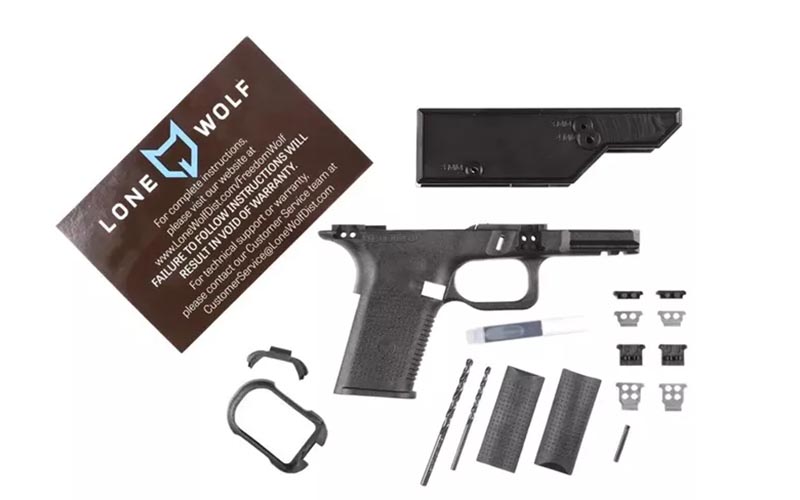
The Freedom Wolf is the 80 percent kit version of the Lone Wolf frame, long considered the best budget-friendly kit for Glock clone builds. It uses Gen 3 Glock parts and retains enough of the Glock trigger guard shape to be used in many Glock holsters.
The kit comes with the receiver blank, completion jig and other tooling, rail caps, backstraps and even drill bits for completing the build.
However, at the time of this writing, Lone Wolf is winding down any sales of the Freedom Wolf kits to comply with the ATF’s ruling. However, the Freedom Wolf may be resurrected as a build-your-own kit that’s serialized.
MSRP: $74.99 // lonewolfdist.com
More DIY Stuff:
- DIY Guns: RECOIL Magazine’s Guide To Homebuilt Suppressors, 80 Percent Lowers, Rifle Mods And More
- Building A 1911
- Blue-Collar AR DMR Build
- Building A Portable Precision Rifle
- DIY AR Paint Job

Next Step: Get your FREE Printable Target Pack
Enhance your shooting precision with our 62 MOA Targets, perfect for rifles and handguns. Crafted in collaboration with Storm Tactical for accuracy and versatility.
Subscribe to the Gun Digest email newsletter and get your downloadable target pack sent straight to your inbox. Stay updated with the latest firearms info in the industry.

![Best Concealed Carry Guns In 2025 [Field Tested] Wilson Combat EDC X9S 1](https://gundigest.com/wp-content/uploads/Wilson-Combat-EDC-X9S-1-324x160.jpg)


![Best 9mm Carbine: Affordable PCCs [Tested] Ruger Carbine Shooting](https://gundigest.com/wp-content/uploads/Ruger-Carbine-Shooting-100x70.jpg)
![Best AR-15: Top Options Available Today [Field Tested] Harrington and Richardson PSA XM177E2 feature](https://gundigest.com/wp-content/uploads/Harrington-and-Richardson-PSA-XM177E2-feature-100x70.jpg)

Building a ghost gun is an excellent way to become more knowledgeable on the operation of this firearm. I thank you for your article.
Mr. Bryden:
Like many other “laws” which are based on the judgement of a bureaucrat (BATFE employee) they Are nothing more than the opinion of an un-elected bureaucrat. That also applies to Merrick Garland who is also un-elected; but appointed. Based on the recent Supreme Court decision re West Virginia vs EPA. If new regulations go against existing practices, they could be subsumed under the major questions doctrine. Accordingly, these regulations could be subject to litigation. The precedent created by West Virginia v EPA could then be used to legally challenge such regulations such as the “Ghost Gun” regulations which change the accepted definition of what constitutes a firearm.
Time to get a 3D printer, folks! There are tried-and-true 3D printable AR lowers and handgun frames available for download, as well as the FGC-9 series which even allows you to make your own rifled barrels. LET’S GO BRANDON!!!
You scored better with me! I like a magazine that will tell it all and let me sort it out. I happen to like ghost guns because, at 75 and retired, it gives me great pleasure researching for best prices & quality, completing a machining job, Cerakoting, fitting selecting the new caliber, firing and reloading the brass. It is no different than a retiree building a bookshelf. I also pay to have mine engraved with info and serial number of MY CHOOSING. My AR-15s self-identify as BB-Guns, except for one that thinks its a gum ball machine!
Why would a reputable entity like GunDigest want to be promoting ghost guns which are increasingly being considered illegal in many jurisdictions!?! You’ve tarnished your image with me!!!